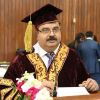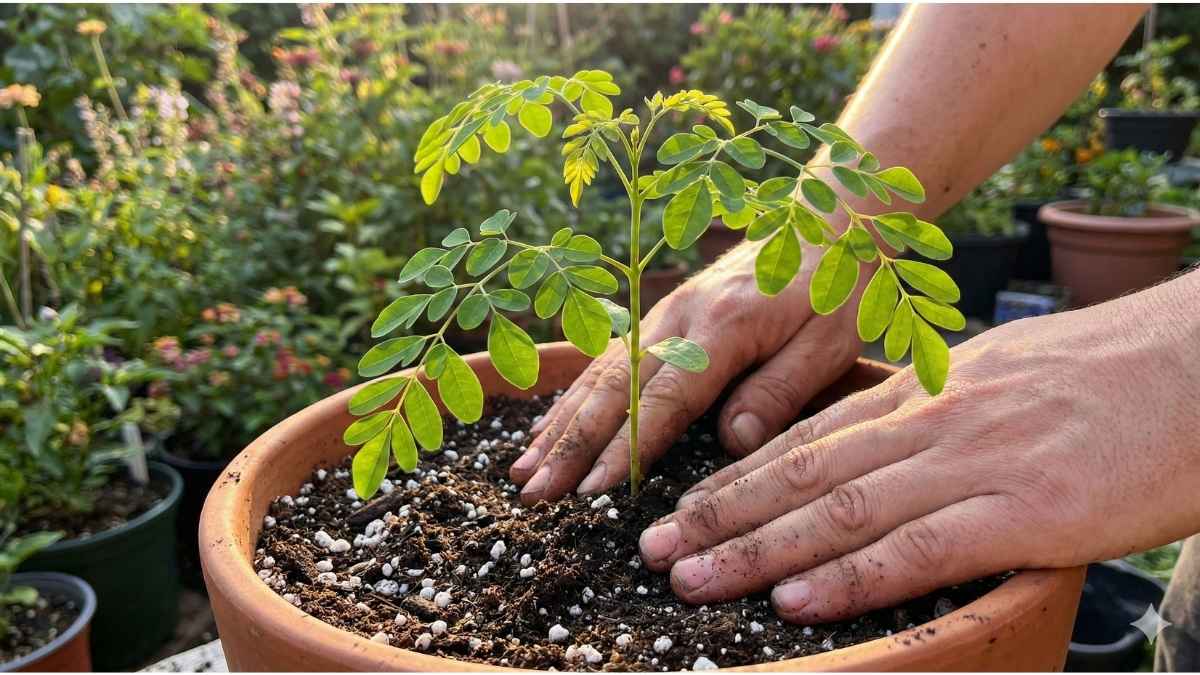Moringa Seeds: Your Definitive Guide to the "Miracle
Tree's" Most Potent Gift 🌱
Have you ever come across a so-called "superfood" and wondered what the real story is? With so much noise online, it’s hard to know what’s a passing trend and what’s genuinely beneficial. That’s exactly the case with moringa seeds. You’ve probably heard whispers about them—that they’re packed with nutrients, that they can do everything from purifying water to boosting your health. But the questions remain: What are they, really? Are the benefits legitimate? And how on earth are you supposed to use them?
It can feel overwhelming. My goal here is to cut through that confusion. As a PhD student in agriculture who also grew up with dirt under my fingernails on a family farm, I’ve learned to look at things from two angles: what the research says and what works in the real world. I want to share what I’ve learned with you, friend to friend. This will be the only guide you need, covering everything from the science-backed health benefits to how you can grow your very own moringa tree. Let’s dig in.
Key Takeaways: Moringa Seed Benefits & Uses
- 🌿 Nutritional Powerhouse: Moringa seeds are packed with essential proteins, Vitamins A & C, and antioxidants that act as fire extinguishers against cellular damage and oxidative stress.
- 🛡️ Vital Organ Support: Scientific studies suggest these seeds may help lower blood sugar levels, reduce cholesterol to protect heart health, and shield the liver from damage.
- 🍽️ Safety & Preparation: For best results and taste, roast the seeds to a golden brown (350°F). Start slow with only 1-2 seeds per day to avoid digestive upset.
- 🌱 Easy to Grow: The "Miracle Tree" thrives in heat. Plant seeds in well-draining soil with sand or perlite to prevent root rot, and ensure 6+ hours of direct sunlight.
What Are Moringa Seeds? The Ultimate Beginner's Guide
First things first, let's get acquainted. Moringa seeds come from the long, drumstick-like pods of the Moringa oleifera tree, often called the "Miracle Tree" or "Tree of Life." Growing up on a farm taught me to appreciate plants that are resilient and serve multiple purposes, and moringa is the perfect example. This tree thrives in tough, arid conditions where other plants might fail.
The seeds themselves are fascinating. They look like small, winged nuts and are found inside the pods. For centuries, traditional medicine has revered every part of this plant, from the leaves to the roots, for its immense benefits. The seeds, in particular, are a powerhouse of nutrition and have been studied for their wide-ranging properties. They are the source of a valuable oil and can be eaten on their own, making them one of the most versatile parts of this incredible plant.
7 Science-Backed Health Benefits of Moringa Seeds 🛡️
 Moringa seeds are found inside the long drumstick-like pods and are distinct for their winged appearance.
Moringa seeds are found inside the long drumstick-like pods and are distinct for their winged appearance.This is where my inner PhD scholar gets excited. It’s one thing to hear anecdotal stories; it’s another to see what the scientific community has to say. The science on this is still emerging, but what we know so far is promising. Here are some of the key benefits of moringa seeds and their components, backed by evidence.
1. They Are Incredibly Nutritious 💪
Moringa is famous for its dense nutritional profile. The seeds are rich in protein, healthy fats, vitamins, and minerals. They contain essential amino acids—the building blocks of protein—as well as vitamins A and C, and minerals like calcium, potassium, and iron. While some claims you see online can be exaggerated, the fundamental truth is that moringa is an excellent source of vital nutrients that are sometimes lacking in modern diets
2. Packed with Powerful Antioxidants
My research has consistently shown that antioxidants are crucial for protecting our bodies from cellular damage caused by free radicals. Think of free radicals as tiny sparks that can cause damage inside your cells. Antioxidants are like the fire extinguishers. High levels of free radicals can lead to oxidative stress, which is linked to chronic conditions like heart disease. Moringa seeds are loaded with antioxidants, including flavonoids, polyphenols, and various vitamins. These compounds help neutralize those harmful sparks, supporting your body's natural defense system.
3. May Help Lower Blood Sugar Levels
For anyone keeping an eye on their blood sugar, this is a significant area of research. Several studies suggest that moringa may help lower blood sugar levels. Compounds like isothiocyanates found in moringa are believed to be responsible for this effect. While it’s certainly not a replacement for medical treatment, the evidence suggests that taking moringa may help support healthy blood sugar management when used alongside a balanced diet.
4. Possess Strong Anti-Inflammatory Properties
Inflammation is a natural response, but when it becomes chronic, it can contribute to a host of health problems. From an academic perspective, finding natural ways to manage inflammation is a key goal in preventative health. Moringa contains compounds like niazimicin that have been shown to suppress the development of cancer cells in lab studies and exhibit anti-inflammatory effects.
5. Support Cardiovascular Health ❤️
Protecting your heart is fundamental to long-term wellness. The antioxidants in moringa, such as quercetin, may help prevent the lipid formation and inflammation associated with heart disease. Furthermore, some studies suggest that moringa may have cholesterol-lowering properties, which is another win for cardiovascular health.
6. May Protect the Liver
Your liver is a hardworking organ, and giving it some support is always a good idea. Moringa has shown hepatoprotective (liver-protecting) potential in pharmacological studies. Research suggests it may help shield the liver against damage, including from conditions like nonalcoholic fatty liver disease.
7. Have Antimicrobial and Antifungal Effects
Growing up, we always knew certain plants could help keep things clean. It turns out, science backs this up for moringa. The seeds contain active components that are believed to have antimicrobial activity. Lab studies have shown that moringa extracts can inhibit the growth of various pathogens, including foodborne bacteria like E. coli and Staphylococcus aureus.
How to Prepare and Eat Moringa Seeds Safely &
Effectively ✅
Okay, let's switch from the lab to the kitchen. Knowing the benefits is great, but how to eat moringa seeds? From my own hands-on experience, I’ve found a few simple and effective methods. The key is to start small and listen to your body.
Preparation Methods
- Roasting: This is my favorite way. Spread the shelled kernels on a baking sheet and roast them at a low temperature (around 350°F or 175°C) for 10-15 minutes, until they turn golden brown. They get a nutty flavor, similar to a roasted almond or chickpea.
- Boiling: You can also boil the seeds. Once they’re soft, you can peel off the outer shell and eat the kernel inside. They have a mild flavor, a bit like a bean.
How to Enjoy Them
- As a Snack: Once roasted, they make a fantastic, crunchy on-the-go snack.
- Sprinkled on Food: Crush the roasted seeds and sprinkle them over salads, soups, or roasted vegetables for a nutrient boost and a bit of texture.
- In Smoothies: Add a few raw or roasted kernels to your morning smoothie. They blend in easily and add protein and nutrients without drastically changing the flavor.
Dosage and Safety
This is important. Moringa seeds are potent. The general recommendation is to start with just 1-2 seeds per day and see how you feel. Some people work their way up to a few more, but consuming too many can cause digestive upset. It’s always best to start low and go slow.
Also, while the leaves are often recommended for pregnant mothers, some parts of the plant, like the bark, may cause uterine contractions, so it's wise for pregnant women to consult a healthcare professional before adding any new supplement to their diet.
A Step-by-Step Guide to Growing Moringa From Seed 🧑🌾
For me, there’s nothing more rewarding than growing my own food. And the good news is, the moringa tree is surprisingly easy to grow if you give it the right conditions. It grows incredibly fast!
Step 1: Get Your Seeds Ready
You can plant moringa seeds as soon as they are collected. To speed up germination, some gardeners soak the seeds in water for 24 hours before planting, but in my own home garden, I find that this isn't strictly necessary.
Step 2: Choose the Right Soil and Pot
Moringa trees develop a long taproot, so they need space to grow. If you're starting in a pot, choose one that’s deep. The most critical factor is drainage. Moringa hates "wet feet" and is very susceptible to root rot. A sandy, well-draining soil mix is perfect. You can mix regular potting soil with sand or perlite to improve drainage.
Step 3: Planting the Seeds
Plant the seeds about 1 inch deep in your soil. Water them thoroughly once, but don’t let the soil become waterlogged. Keep the pot in a warm, sunny spot. Moringa loves heat and sun—ideally, temperatures between 70°F and 95°F (21°C to 35°C) are best for sprouting.
Step 4: Watering and Care
Keep the soil consistently moist but not soggy while the seedling is young. Once the tree is established, it becomes very drought-tolerant. A deep watering once a week is usually plenty, depending on your climate. Make sure your tree gets at least 6 hours of direct sunlight a day.
Step 5: Transplanting and Pruning
Once your seedling is about 6-8 inches tall, you can transplant it to its final location in your garden or a much larger pot. Pruning is your friend with moringa! When the tree gets a few feet tall, you can trim the main trunk to encourage it to grow bushier, which makes harvesting the leaves much easier.
Buyer's Guide: How to Choose and Purchase High-Quality
Moringa Seeds 💡
Not all moringa seeds on the market are created equal. As a conscious consumer, you want to make sure you’re getting a high-quality, viable product. Here’s what I’ve learned to look for:
- Appearance: High-quality, mature seeds should have dark brown or black hulls with whitish, paper-like wings. If you see a lot of seeds with white hulls or greenish wings, they were likely harvested too early and may not be viable.
- Source and Certifications: Look for suppliers who are transparent about where their moringa comes from. The term "organic" can be tricky. For a product to be truly organic, it should be certified by a reputable organization. The soil quality is incredibly important because moringa is a bioaccumulator, meaning it can absorb heavy metals from the soil if they are present.
- Purity and Freshness: The seeds should be dry and nearly odorless. Any off-smell could indicate excess moisture or mold. Also, check for signs of pests, like tiny pinholes in the hulls or a powder-like substance (frass) in the bag.
- Reputable Brands: Choose brands that conduct rigorous testing for things like heavy metals and pesticides. A trustworthy company will be proud to share its quality control standards.
Moringa Seed Oil: The Seed's Most Potent Product
Before we wrap up, I have to introduce you to one of the most prized products derived from moringa seeds: the oil. Known commercially as "Ben oil," this luxurious oil is extracted from the seeds, typically through a cold-pressing process that preserves its nutrients.
From a scientific standpoint, the oil is remarkable. It’s extremely high in oleic acid, a monounsaturated fatty acid that’s also abundant in olive oil and is known to be beneficial for health. It’s also rich in antioxidants and tocopherols (forms of Vitamin E), making it highly stable and resistant to rancidity. This is why it’s so valued in both the food and cosmetic industries. Its benefits for skin and hair are particularly noteworthy.
The world of moringa oil is a deep and fascinating topic all on its own. To discover the full range of benefits and uses of this incredible oil, from its anti-aging properties to its role in a healthy diet, I encourage you to read our complete guide to Moringa Seed Oil.
High-Value Links for Further Reading
To continue your journey, here are three exceptional resources known for their quality and trustworthiness:
1. Healthline - 6 Benefits of Moringa Oleifera: This article provides a well-researched, evidence-based overview of the health benefits of the moringa plant, breaking down the science in an easy-to-understand format. It's a great place to verify the nutritional claims you see online.
2. WebMD - Moringa Overview: For a straightforward look at the uses, side effects, and potential drug interactions of moringa, WebMD offers a reliable and medically reviewed resource. It’s essential for understanding the safety profile of any new supplement.
3. Frontiers in Nutrition - Supercritical CO2 Extraction of Moringa oleifera Seed Oil: For those who love to dive deep into the science, this peer-reviewed journal article explores the advanced methods of extracting moringa oil and analyzes its potent antioxidant properties. It’s a fantastic look at the cutting-edge research behind this powerful plant.

Meet Saqib
Saqib Ali Ateel is a PhD Scholar by training and a "student of the soil" by nature. He combines deep research, hands-on farming wisdom, and agricultural systems supervision to reveal what’s really on your plate. His mission is simple: to help your family navigate the food industry's complexity so you can eat cleaner, safer, and smarter.
- Home
- Moringa Benefits
- Moringa Seeds


